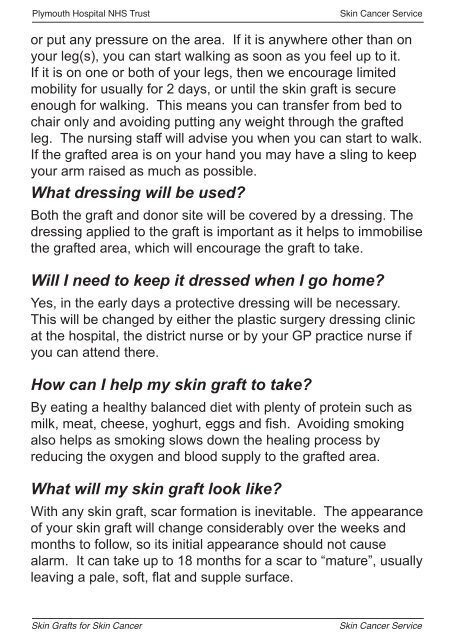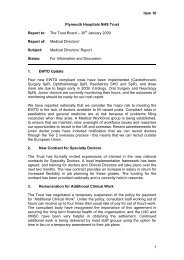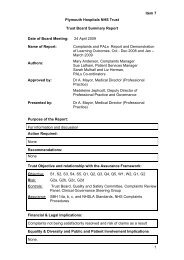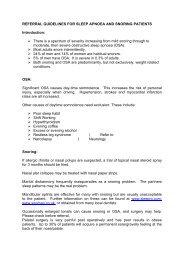Skin Cancer Service - Plymouth Hospitals
Skin Cancer Service - Plymouth Hospitals
Skin Cancer Service - Plymouth Hospitals
Create successful ePaper yourself
Turn your PDF publications into a flip-book with our unique Google optimized e-Paper software.
<strong>Plymouth</strong> Hospital NHS Trust<br />
<strong>Skin</strong> <strong>Cancer</strong> <strong>Service</strong><br />
or put any pressure on the area. If it is anywhere other than on<br />
your leg(s), you can start walking as soon as you feel up to it.<br />
If it is on one or both of your legs, then we encourage limited<br />
mobility for usually for 2 days, or until the skin graft is secure<br />
enough for walking. This means you can transfer from bed to<br />
chair only and avoiding putting any weight through the grafted<br />
leg. The nursing staff will advise you when you can start to walk.<br />
If the grafted area is on your hand you may have a sling to keep<br />
your arm raised as much as possible.<br />
What dressing will be used?<br />
Both the graft and donor site will be covered by a dressing. The<br />
dressing applied to the graft is important as it helps to immobilise<br />
the grafted area, which will encourage the graft to take.<br />
Will I need to keep it dressed when I go home?<br />
Yes, in the early days a protective dressing will be necessary.<br />
This will be changed by either the plastic surgery dressing clinic<br />
at the hospital, the district nurse or by your GP practice nurse if<br />
you can attend there.<br />
How can I help my skin graft to take?<br />
By eating a healthy balanced diet with plenty of protein such as<br />
milk, meat, cheese, yoghurt, eggs and fish. Avoiding smoking<br />
also helps as smoking slows down the healing process by<br />
reducing the oxygen and blood supply to the grafted area.<br />
What will my skin graft look like?<br />
With any skin graft, scar formation is inevitable. The appearance<br />
of your skin graft will change considerably over the weeks and<br />
months to follow, so its initial appearance should not cause<br />
alarm. It can take up to 18 months for a scar to “mature”, usually<br />
leaving a pale, soft, flat and supple surface.<br />
<strong>Skin</strong> Grafts for <strong>Skin</strong> <strong>Cancer</strong><br />
<strong>Skin</strong> <strong>Cancer</strong> <strong>Service</strong>

















